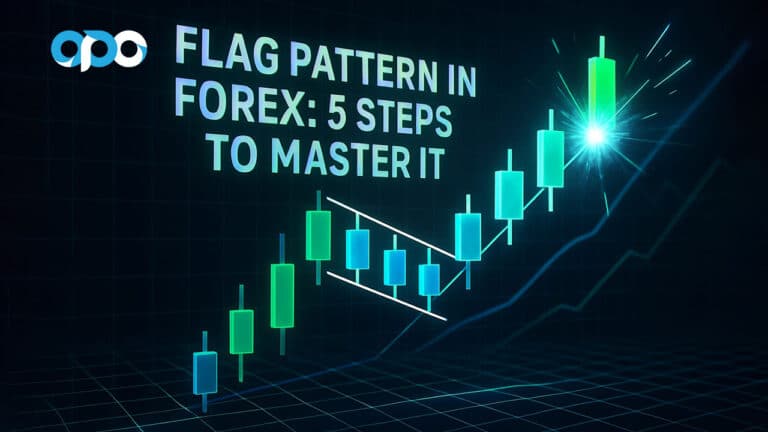When looking for the highest win rate day trading strategy, traders often struggle with conflicting advice, feel like searching for a needle in a haystack: should they focus on technical patterns, risk management, or news-based setups? Day trading is a high-stakes endeavor where swift decision-making can yield substantial profits or significant losses. In reality, the robust high win rate day trading strategies approach requires a balanced framework—fusing top‑tier analytics, behavioral discipline, and real‑world validation. High win rate day trading setups is your essential guide to discovering and capitalizing on trading strategies and setups that offer a higher consistent probability of success. Whether you’re a seasoned trader or just starting, this article will help you identify and harness the strategies that can lead to consistent gains in the fast-paced world of day trading.

What is Day Trading?
Day trading involves buying and selling financial instruments within the same trading day. In forex trading, this means capitalizing on short-term price movements in currency pairs. The goal is to close all positions before the market closes, thus avoiding overnight risk. Effective day trading requires a solid understanding of market trends, technical analysis, and the psychological aspects of trading.
The Foundations of a High Win Rate Strategy
A successful day trading strategy must integrate several key components. Here’s a breakdown of what makes this high win strategy effective:
Technical Analysis
Technical analysis is the beating heart of any high win rate strategy. Traders use various technical analysis tools to predict future price movements. You can find some of key highlights of these technical tools:
- Identifying Optimal Entry Points: Discover setups that maximize your chances of entering profitable trades that align with market trends, price patterns, and technical indicators.
- Candlestick Patterns: Recognize candlestick charting patterns such as engulfing, doji, and hammer candles.
- Moving Averages: Explore the use of simple and exponential moving averages to identify trends and dynamic support and resistance levels.
- Momentum Strategies: Discover setups that leverage momentum indicators like the Relative Strength Index (RSI) and Stochastic Oscillator to identify overbought and oversold conditions.
- Breakouts and Pullbacks: Explore trading setups that capitalize on breakout and pullback opportunities.
- Support and Resistance Zones: Understand the significance of support and resistance levels and how to use them to make informed trading decisions.
Risk Management
Top practitioners advocate a 1:2 risk-to-reward ratio and strict stop-loss discipline. According to data from a leading quant hedge fund, trades with fixed stops outperform discretionary stops by nearly 15% in cumulative returns. Developing an effective risk management strategy is crucial to protecting the capital and minimizing losses. This strategy emphasizes:
- Position Sizing: Determine the size of each trade based on account size and risk tolerance. A common rule is to risk only 1-2% of your trading capital on any single trade.
- Stop-Loss Orders: These are essential to limit potential losses. Placing a stop-loss order at a specific price helps protect your capital, ensuring you don’t lose more than planned.
Market Timing
Successful intra-day trading hinges on choosing the right time to enter and exit trades. The forex market operates 24 hours a day, but volatility peaks during specific sessions:
- London Session: This session is known for its high volatility and liquidity, making it an ideal time for day traders.
- New York Session: The overlap between the London and New York sessions often presents excellent trading opportunities due to increased market activity.
- Asia Session: If you are living in the south or southeast of Asia, or living in other areas but prefer to trade in the Asia session, this session encourages you to take trades according to day trading strategies by offering a significant liquidity flow and sometimes extreme volatility, often driven by institutional traders, banks, and smart money Asian traders.
Trading Plan
A well-defined trading plan is vital. This should include your trading goals, strategies, risk management techniques, and precision entry and exit criteria. Sticking to your plan is essential, as emotional trading can lead to poor decision-making. Whether it’s VWAP bounce, opening range breakout, or momentum divergence, only strategies with statistically robust win ratios should be used.
Psychological Discipline
Discipline is paramount in high win rate day trading strategies. The ability to adhere to strategy, control emotions, avoid impulsive decisions, and stay focused during fast-moving markets can significantly impact your win rate. Successful traders develop a mindset that prioritizes long-term gains over short-term losses.
Read More: Best Forex Indicators for Day Trading

Leading High Win Rate Day Trading Strategy Archetypes
Here are five proven high win rate day trading strategies used in real trading environments:
Opening Range Breakout
The opening range refers to the highest and lowest price reached during a specific timeframe after the market opens, typically the first 5 to 60 minutes. This range sets a baseline for the day’s trading, giving traders a framework for anticipating potential breakouts. A tighter range suggests more potential energy for a strong price move once the range is broken.
- Win Rate: Historically ~60–65% on high‑liquidity stocks.
- Key elements: Volume analysis, pre-market gap behavior, and overall market sentiment.
VWAP
The Volume Weighted Average Price (VWAP) is used for identifying institutional behavior, gauging momentum, and planning trades. VWAP reflects the average price a security has traded at throughout the day, based on both volume and price.
- Win Rate: 58–62% on well-filtered equities.
- Note: VWAP is not just an average; it’s a battleground. When the price is above VWAP, it suggests bullish sentiment, and institutions may be supporting the stock. When the price is below VWAP, bears are likely in control.
Momentum Breakout
The Momentum Breakout Strategy is specifically designed for high-momentum stocks. By combining Exponential Moving Averages (EMA), Relative Strength Index (RSI) filtering, volume confirmation, and Average True Range (ATR)-based trailing stop-loss, the strategy aims to capture strong market breakouts (fast intraday price moves with volume spikes) while avoiding false signals and requiring quick execution and strict discipline.
- Win Rate: 35–50%, with high average profit per trade.
Tight‑Range Scalping
Tight-Range Scalping is mostly used in Low-Volatility Markets as one of the high win rate day trading strategies. The market conditions are defined by small price movements and narrow ranges, which make it difficult to generate meaningful profits without taking on excessive risk. Scalpers operating must adjust their approach, reducing trade frequency, minimizing exposure, and ideally waiting for more favorable, volatile setups to emerge.
- Win Rate: 65–70%, with quick trades (seconds to minutes).
News Catalyst Trading
News Catalyst Trading is based on analyzing economic data, releasing monthly or corporate news, and trading on the immediate market reaction. This could sometimes occur within big moves and lead to big profits. This strategy requires access to fast news, speeches, and event-driven volatility.

- Win Rate: 55–60% if using reliable data feeds and low latency.
Common Trader Mistakes to Avoid
- Chasing Performance: Overoptimizing for past data kills future edge.
- Undercapitalization: Scaling too fast wipes gains under slippage and bad luck.
- Neglecting Costs: Always factor in commissions, fees, and bid/ask spreads.
- Emotional Overtrading: Stick to defined setups; avoid revenge trading.
Read More: How to Become a Day Trader?
Integrating High Win Rate Day Trading Strategies
Now that we’ve covered the foundational elements, let’s discuss how to apply this powerful forex day trading strategy in practice.
Step 1: Set Up Your Trading Environment
- Choose the Right Broker: Select a reliable forex broker with low spreads and fast execution times. Look for a broker that offers a robust trading platform equipped with the necessary tools for technical analysis.
- Select Currency Pairs: Focus on major currency pairs such as EUR/USD, GBP/USD, and USD/JPY. These pairs typically have high liquidity, making them ideal for day trading.
Step 2: Develop a Trading Routine
Establish a daily routine that aligns with market sessions. This could involve:
- Pre-Market Analysis: Spend time analyzing charts, identifying key levels of support and resistance, and noting any significant news events that may impact currency prices.
- Monitoring News Releases: Economic indicators and news events can cause significant price movements. Use an economic calendar to stay informed about scheduled releases that may affect your trading pairs.
Step 3: Execute Trades
- Entry Signals: Look for specific patterns or signals based on your strategy.
- Setting Targets and Stops: Always set profit targets and stop-loss levels before entering a trade. This helps maintain discipline and prevents emotional decision-making during trading.
Step 4: Review and Adapt
After each trading day, review your trades to assess what worked and what didn’t. Keep a trading journal documenting your strategies, outcomes, and emotions. Continuous learning and adaptation are vital in the ever-evolving forex market.
Conclusion
The financial market can be both exciting and challenging, but with the right strategy, traders can achieve remarkable success. By implementing this powerful day trading strategy that could boast a 90% win rate, you can harness the potential of intraday trading to maximize your returns. Adopting high win rate day trading strategies isn’t magic—it’s a disciplined blend of data integrity, edge validation, risk control, and adaptive execution. By combining proven setups like opening range breakouts, VWAP trades, momentum, and news catalysts with strict strategy management, you can consistently outperform and mitigate downside. Remember—the highest win rate day trading strategy isn’t a single secret; it’s the result of methodical development, testing, and disciplined practice. Remember, consistency, discipline, and continuous learning are key to becoming a successful trader.
What psychological traits support a high win rate day trading strategy?
High‑win‑rate traders typically exhibit discipline, emotional detachment, patience, and an analytical mindset. They adhere to their plans and don’t deviate on impulse.
How much capital is needed to start profitably with these strategies?
A realistic starting point is $5,000–$10,000. This covers typical margin requirements for stocks or futures and helps absorb slippage. Start small, grow as your edge proves itself.
Can I combine multiple high win rate day trading strategies?
Absolutely. Many professionals diversify across multiple strategies (e.g., combining VWAP fades with momentum breakouts) to smooth returns—just ensure each remains individually validated and you don’t overtrade.







